by ewestbrook | Oct 6, 2016
Here in North Florida, as the dogwood trees start to turn colors and drop their leaves and I wait for the first cool breezes of a seemingly delayed Autumn I often find my memory is easily awoken by hints of past falls.
As a teen I participated for several years in the Agricultural Judging contest on the Wakulla County 4-H team. I fondly remember sticking my nose into a bail of bahia grass hay to check it for freshness. I can still recall my nerves as I stood silently beside my peers, clipboard in hand, intently looking over hogs and heifers rating them by confirmation and preparing the oral reasons to defend my decisions. The feel of oats in my hand as I compared and contrasted the merits of several samples.
The lessons I learned in Ag Judging stayed with me. It was one of my first introductions to the science of Agriculture. As a 4-H Horse project kid before my participation in the contest I had never stopped to consider many of the other aspects of agriculture that informed and supported my interest in horses and my horses themselves.
Understanding how to recognize and judge the grain and hay I fed my animals daily sparked an even greater understanding and interest in agriculture as a whole. Learning to judge other livestock piqued my interest in equine judging and led me to compete in that event at the state level and even win a state judging division one year. Once I was able to drive, my experience in judging agricultural commodities gave my parents the confidence to send me to buy the large amounts of hay and grain needed to keep the horses at our family’s boarding stables happy and fit. One less chore for them to have to worry about.
In college as an agricultural student I found that the 4-H judging programs I had participated in had prepared me perfectly for the practical lab tests in class. I discovered that they were set up in the same format as the 4-H programs I had been in just a few years before. 4-H helped me prepare for college by giving me practice in the exact kind of tests and exams as I would face in almost every practical agricultural lab I would end up taking.
Reading this some might think that the Agricultural Judging contest sounds great for a farm boy or girl looking to have a career in agriculture but it may not be for me or for my 4-H’er. They may change their minds after considering the life skills learned. The ability to think on your feet and the independence to rely on personal knowledge when making decisions are vital real world examples. These are the exact positive life skills that 4-H judging competitions teach and hone in young people.
Long-time Leon County 4-H Agent Marcus Boston says that he has, “seen the positive difference that 4-H has on young people. Agricultural judging teaches independent thinking. Youth have to make choices based off what they know and can’t ask for someone else to decide for them. That’s what you have to do every day as an adult.” Mr. Boston has been organizing the Ag Judging program at the North Florida fair since I was participating in the early 2000’s. That kind of dedication speaks to a real belief in the benefits and results of a program.
The youth who participate in the program can anticipate judging categories that will be chosen from the following:
- Beef (Steers)
- Poultry
- Corn (shelled)
- Oats
- Heifers (Beef)
- Perennial Peanut Hay
- Soybeans
- Grass Hays (e.g. Bahia, orchard grass)
Since different categories depend on availability and community support participants should be prepared for all of the categories.
If coaching or participating in an ag judging team appeals to you, contact your local UF IFAS County Extension Office or visit http://florida4h.org. You can find out more about ag judging at these links:
by ewestbrook | Feb 26, 2016
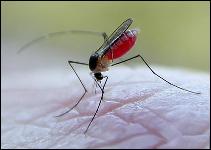 It’s February in Florida and as the weather gets warmer we Floridians start to turn our attention to the thousands of outdoor activities our beautiful state has to offer. Florida is not just known for its natural beauty, it is also known for it abundance of mosquitoes. With the mosquito transmitted Zika virus making headline news and the tell tale itchy red bites popping up on our unprotected skin you may be wondering what you can do to protect your family in the coming months. Millions of dollars are spent in Florida every year to combat mosquitoes. Municipalities will often spray for mosquitoes and use larvacides in wetland areas to control the pests. You can make a big difference in the effort to combat the blood-sucking parasites and prevent disease transmission by following the five d’s of mosquito control and prevention.
It’s February in Florida and as the weather gets warmer we Floridians start to turn our attention to the thousands of outdoor activities our beautiful state has to offer. Florida is not just known for its natural beauty, it is also known for it abundance of mosquitoes. With the mosquito transmitted Zika virus making headline news and the tell tale itchy red bites popping up on our unprotected skin you may be wondering what you can do to protect your family in the coming months. Millions of dollars are spent in Florida every year to combat mosquitoes. Municipalities will often spray for mosquitoes and use larvacides in wetland areas to control the pests. You can make a big difference in the effort to combat the blood-sucking parasites and prevent disease transmission by following the five d’s of mosquito control and prevention.
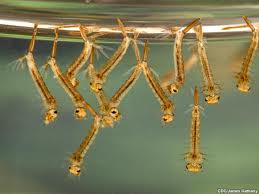
Larval mosquitoes in a pool of water
- Dump- Mosquitos spend the beginning of their lives developing in aquatic environments and they don’t mind small spaces. By periodically dumping standing water you can prevent them from growing into adults that feed on you. Standing water in old tires, plant containers, buckets and any other containers with standing water all provide a great environment for many species of mosquitoes to develop. By being vigilant in dumping these containers you are doing a lot to control mosquito populations.
- Drain– Kiddy pools, water troughs, pet water dishes and birdbaths all provide an ideal environment for mosquito larva to grow. You can prevent this by regularly draining and refilling these water sources.
- Dress– When you are dressing to go outdoors in the warmer months in Florida prepare for mosquitoes. Wear clothing that covers as much skin as possible to prevent bites. Long pants and long sleeve shirts made out of lighter materials like linen are ideal in our hot summer climate when venturing into the great outdoors. Also consider hats with mosquito netting
- DEET- Use an insect repellent that lists DEET or alternatively eucalyptus oil to prevent mosquito bites. DEET is proven to be the most effective repellent and safe for human use. Bug zappers, candles and ultra- sonic devices are not effective mosquito control measures. Save your money and invest in proven solutions like DEET based insect repellents.
- Dusk/Dawn- Mosquitoes are most active during the early morning and evening hours. Try to stay indoors during these time periods and if that is not possible make sure you are dressed to prevent mosquito bites and using DEET based insect repellent.
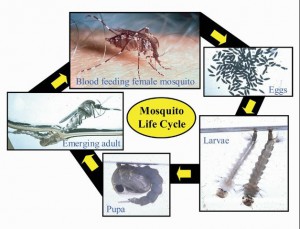
The mosquito lifecycle
For more information on mosquitoes in Florida call you county UF|IFAS Extension Office or county health department and check out these in-depth articles on the subject:
http://mosquito.ifas.ufl.edu/Fact_Sheets.htm
https://edis.ifas.ufl.edu/in851
http://edis.ifas.ufl.edu/in652
Do you have a love for the outdoors? Would you like to share your passion for the environment with the next generation of Florida citizens? If so, consider becoming a 4-H volunteer. Florida 4-H offers a range of opportunities for volunteers to teach youth about natural resources, shooting sports, and water conservation (just to name a few). For more information about becoming a 4-H volunteer, visit your local UF IFAS County Extension office or http://florida4h.org/volunteers.
by ewestbrook | Nov 13, 2015
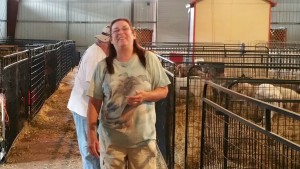
For more than 33 years, Priscilla Weaver has been teaching youth about animal science through the 4-H club program.
This time of the year you can find her at the North Florida Fairgrounds in the livestock buildings. As the North Florida Fair’s Livestock Director she’ll be busy putting on a great livestock show and competition for youth and adults. Priscilla Weaver is passionate about growing the 4-H animal science program. For more than two generations (33 years) Priscilla has been teaching youth about animal sciences and animal husbandry as the Kapra Kids Dairy Goat 4-H Club Leader in Wakulla County, Florida.
Priscilla started the club when she saw a need for her children and their friends to have an opportunity to participate in 4-H. “Youth need things like 4-H in their lives to grow up well,” says Priscilla. When asked why she thinks youth need 4-H Priscilla replied, “4-H teaches young people so many things, things like responsibility, caring and the ability to see a project through to its end.”
Priscilla has raised dairy goats her whole life, so when she started her club she worked with her club members in that project area. Her club has had as many as 16 members before and has won uncounted number of awards and ribbons showing their goats and their dairy by-products like cheese and soap at the Florida State Fair in Tampa, Florida
. Priscilla feels strongly about teaching today’s youth about animal husbandry saying,
“It teaches them so many things; math and science, recordkeeping, planning and responsibility. Participating in a 4-H animal project also teaches caring and empathy by having responsibility for an animal,” says Priscilla.
Empathy and caring are two traits Priscilla has in abundance. When not volunteering for 4-H, she spends her free time working at the fair, caring for her own livestock, or volunteering with the senior group at her local church. These traits also display in the activities of Priscilla’s 4-H club as they participate in many community service projects and also in her leadership of multi-club service projects at places like the local senior center.
When asked what has kept her going as a 4-H volunteer for so many years Priscilla will tell you that it’s because, “she loves working with the youth.” Because of volunteers like Pricilla, 4-H is able to help youth grow resilience, empathy, and responsibility through animal science programs. These are life skills that will help youth be successful no matter what career path they choose. If you want help empower young people to be the best they can be by sharing your passions in a meaningful way Like Priscilla has, consider becoming a 4-H volunteer. The Florida 4-H Program offers a wide variety of volunteer roles to fit your schedule, interests and skills. Contact your local UF IFAS Extension Office or visit http://florida 4h.org/volunteer for more information on how to volunteer today.
by ewestbrook | Apr 24, 2015
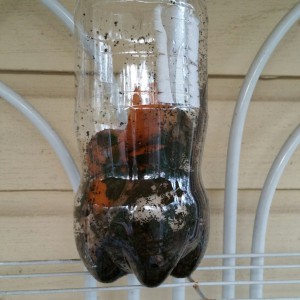
A two liter soda bottle with the top cut off makes a great mini compost bin. This is a a new batch with soil mixed in to experiment with jumpstarting the composting process.
With the promise of fresh vegetables just around the corner, now is a great time to think about starting a compost pile to save money on fertilizer and potting soil for your garden. Composting makes an excellent (and environmentally friendly) project for youth. It can save you money on commercially sold soil amendments as well as improving the quantity and quality of your vegetable harvest. Compost is simply organic material that has been broken down by living organisms until it can be used by plants as nutrients. This decomposed material is called humus and it is a great natural fertilizer. All that you need to get started composting are a few key ingredients:
- An even mix of nitrogen rich “green” organic materials and carbon rich “brown” organic materials. Greens include items like fresh grass clippings, manure and vegetable scraps from the kitchen. Browns are things like dead leaves, straw, or newspaper.
- Moisture is needed for the organisms that break the compost down to live, but not too much. The pile should be damp, not soggy.
- Air should be introduced to the compost periodically by mixing it up.
- Time is necessary for microorganisms to turn the brown and green materials into humus.
There are several methods of composting, from something as simple as a pile in a corner of your yard to a commercially sold rotating bin. Whatever composting system your group chooses the basic method of creating a good composting mixture is the same. Simply make even layers of browns and greens and moisten the pile slightly with water. Over the course of the next few weeks, microorganisms will begin decomposing the mixture, releasing heat as a byproduct. Temperatures will sometimes to as high as 140° F. The mixture will reduce in volume by nearly half as it breaks down. Once the mixture is entirely composted it will be close to ambient temperature and will resemble fine dark rich soil with some large clumps. To test the compost, plant a few fast growing radish seeds in it. If they don’t grow or are unhealthy it means bacteria are still decomposing the compost mixture and competing with the plants for nutrients. If the plants are healthy the mixture is ready to use in the garden either by spreading it like a mulch, mixing it into the soil or making a compost tea.

A two liter soda bottle with the top cut off makes a great mini compost bin. This is a a new batch with soil mixed in to experiment with jumpstarting the composting process.
As an alternative to a large compost pile or bin you can create mini compost mixtures in a variety of recycled containers, such as a mason jar or empty 2-liter bottle. These are great for small classroom projects, science experiments and take home projects. Make sure to that the compost can be mixed and is getting air. Keep it in a sunny spot so it is warm enough for the microbes to work. Here are some ideas to extend this activity into a project to learn the science behind composting:
- Help youth research composting methods and choose the best one for them. Encourage them to consider things like cost, labor and time when deciding the best method.
- Try different types of composting methods and mixtures. Have the youth make predictions about which mixture will be the most effective. Have them design an experiment to find out what happens if more greens are in a composting mixture than browns? Or, why would one method decompose faster than the other? What is the fastest method of composting?
- Keep records and observations about the compost as it decomposes. By measuring factors like temperature, texture, smell and look youth learn the value of recordkeeping as they use the data they collected to research the best composting methods.
- Have the finished compost soil tested. Ask your county 4-H Agent to invite a UF/IFAS Agriculture or Horticulture Agent to help perform the test and explain the results to the group.
For more resources to help your club or group to learn composting by doing visit these sites:
Do you have a passion for gardening that you would like to share with others? Last year, nearly 20,000 youth participating in the 4-H Gardening Project. This would not have been possible without our 4-H volunteers. If you would like to help the next generation develop gardening skills and an appreciation for agriculture and the environment, consider becoming a volunteer. To find out more, contact your local UF IFAS Extension Office, or visit http://florida4h.org/volunteers.
Your opinion matters! Take this short survey to help us improve our blog https://ufl.qualtrics.com/SE/?SID=SV_3gtLKjqia3F75QN.





